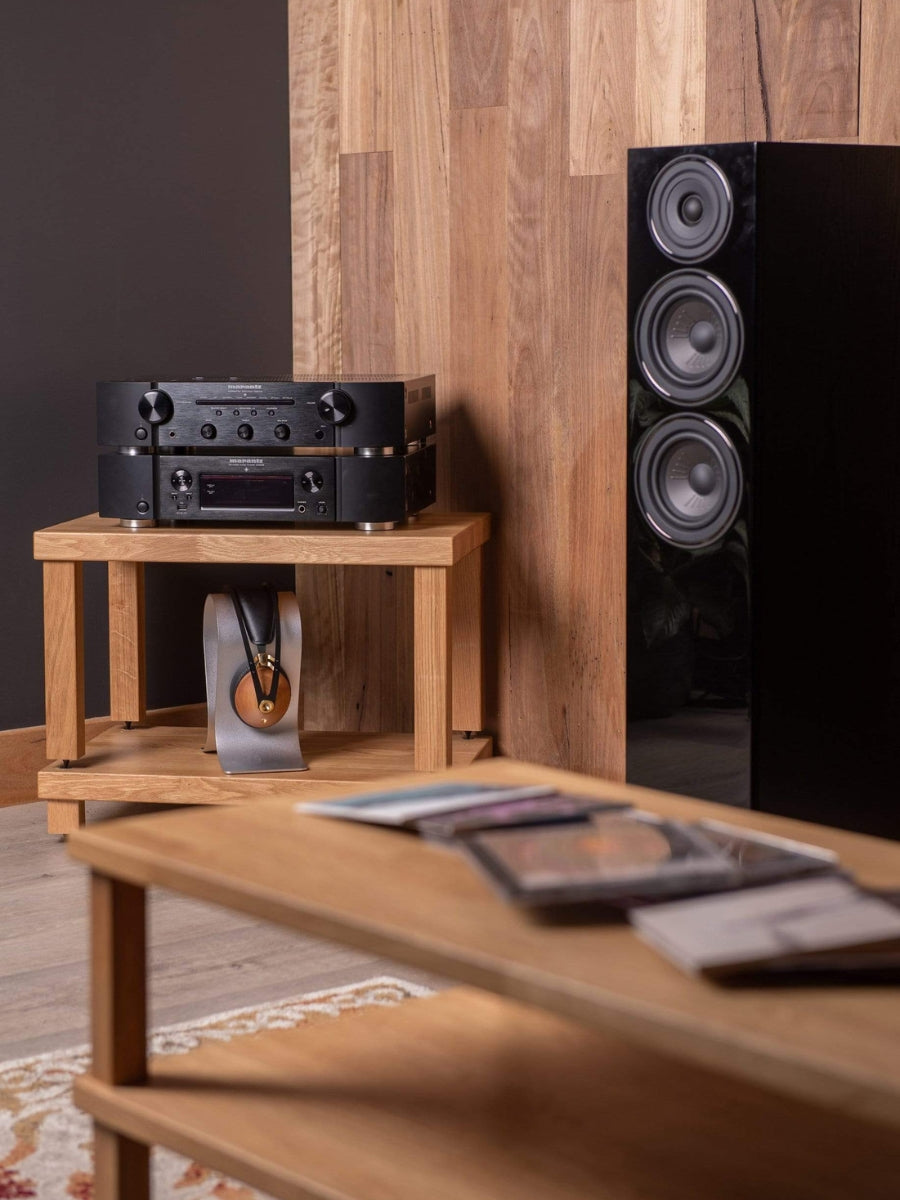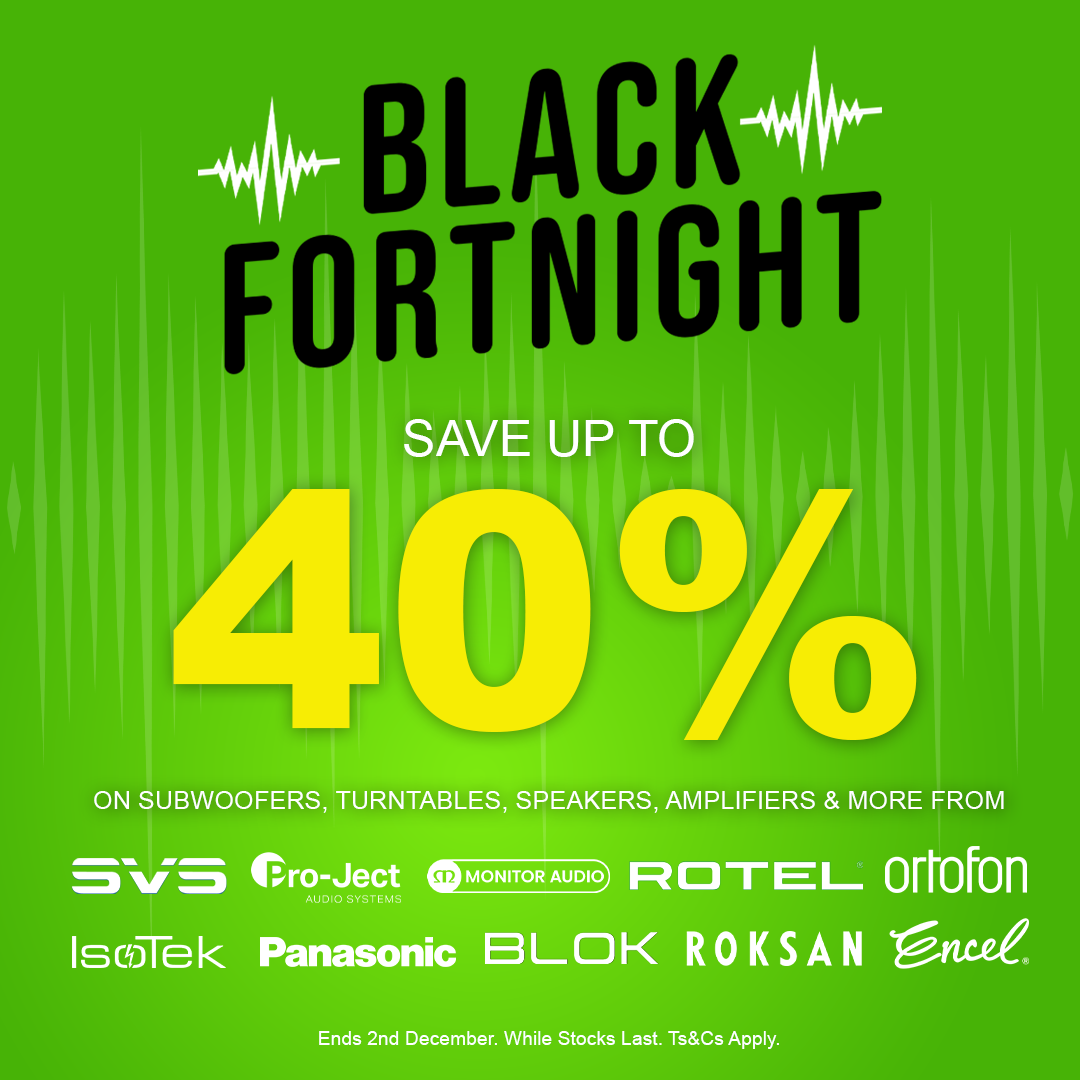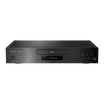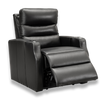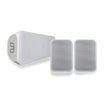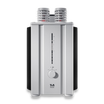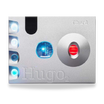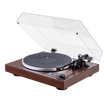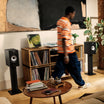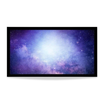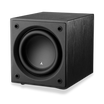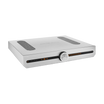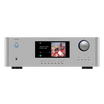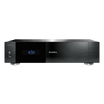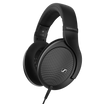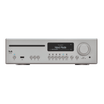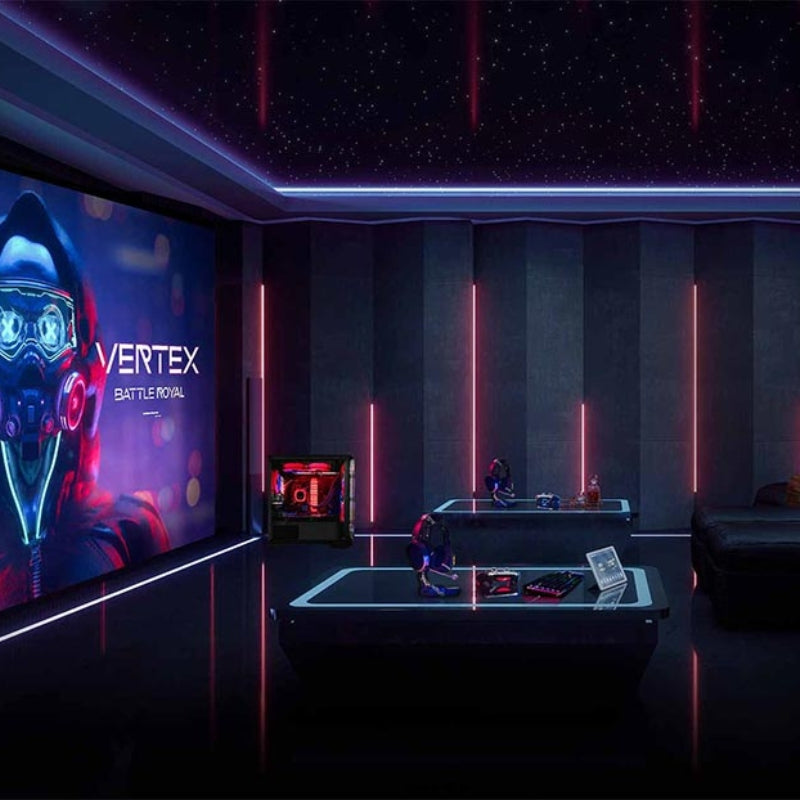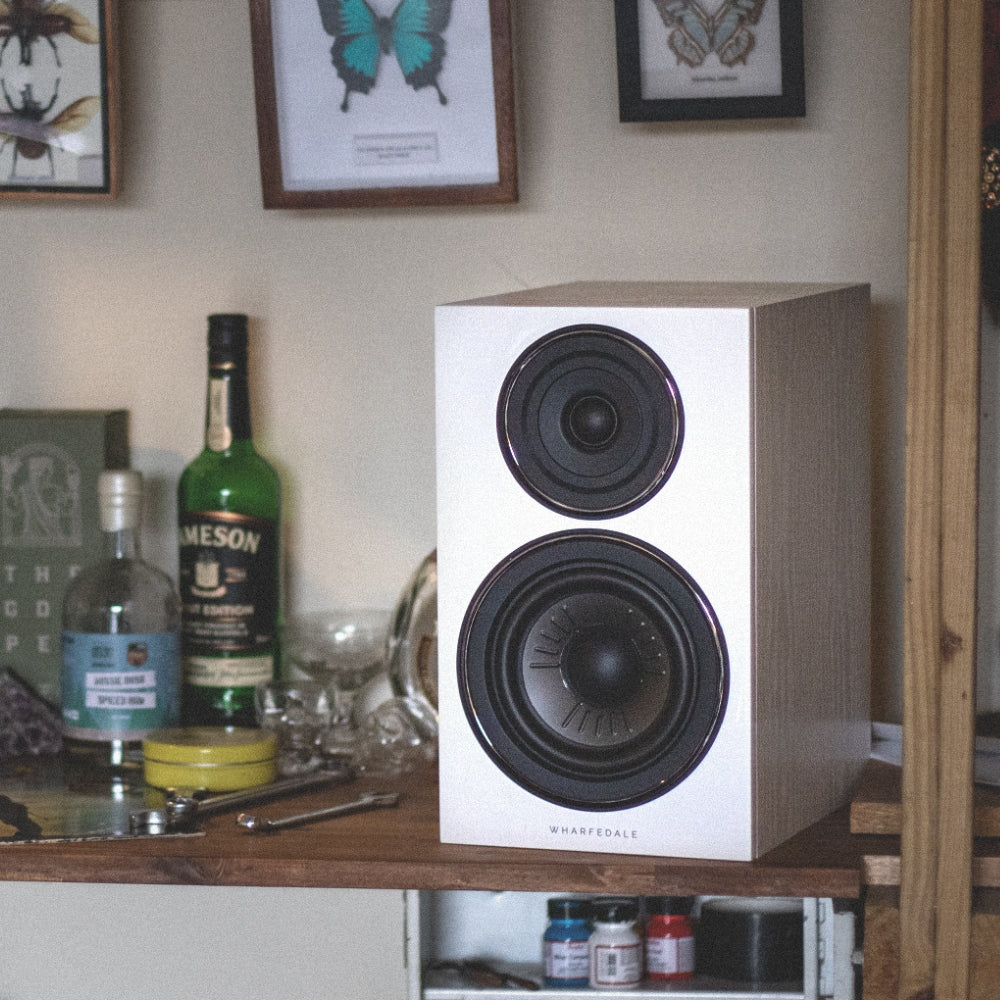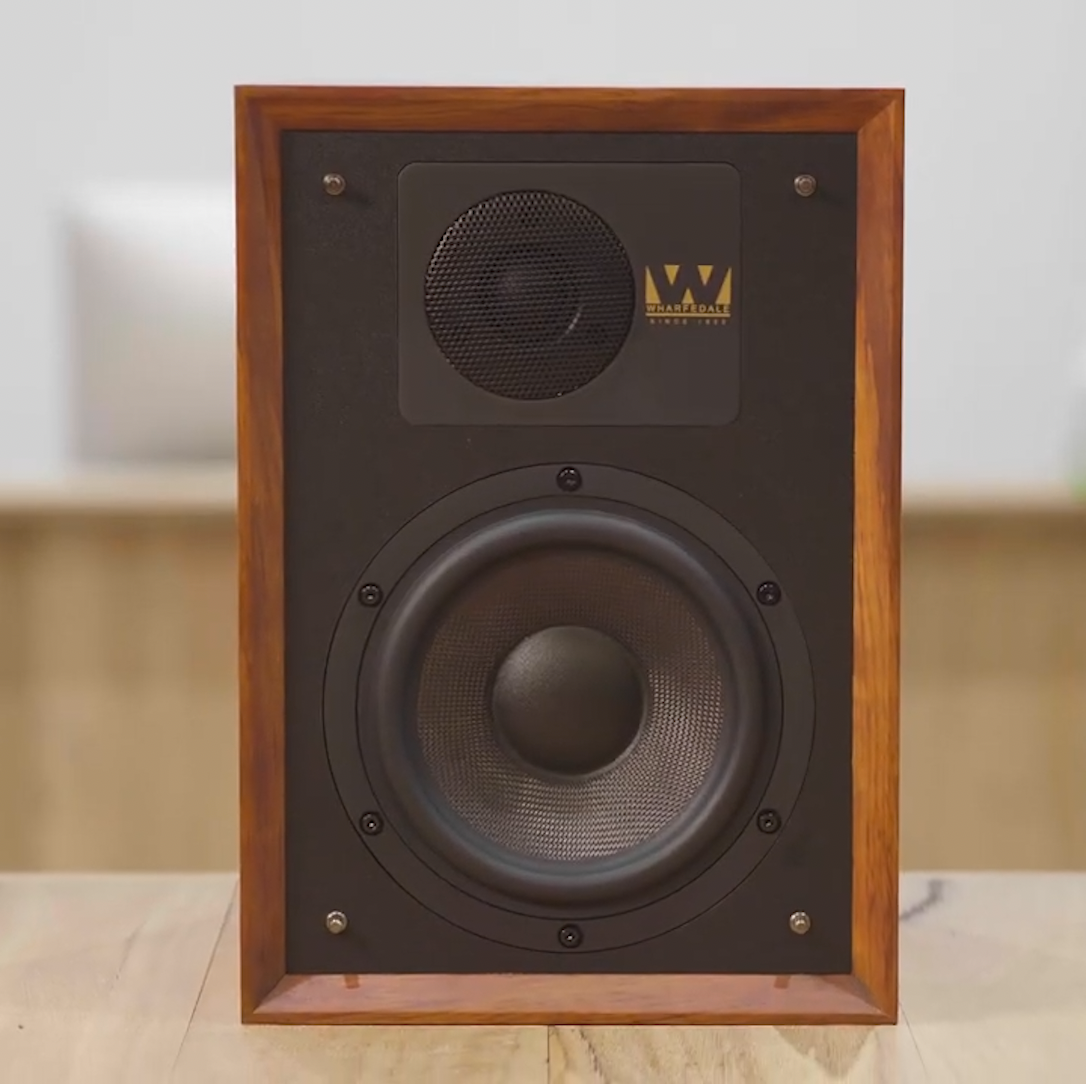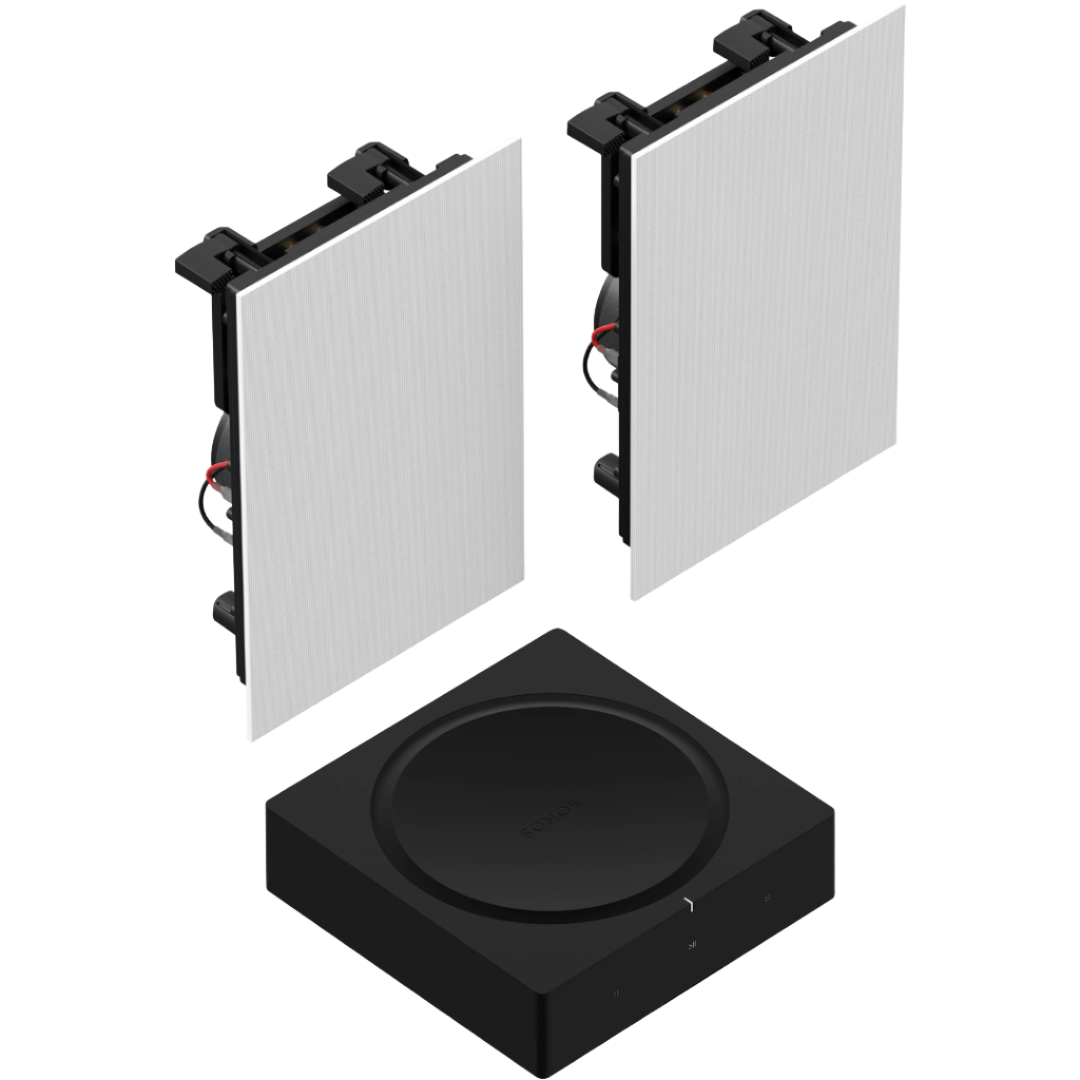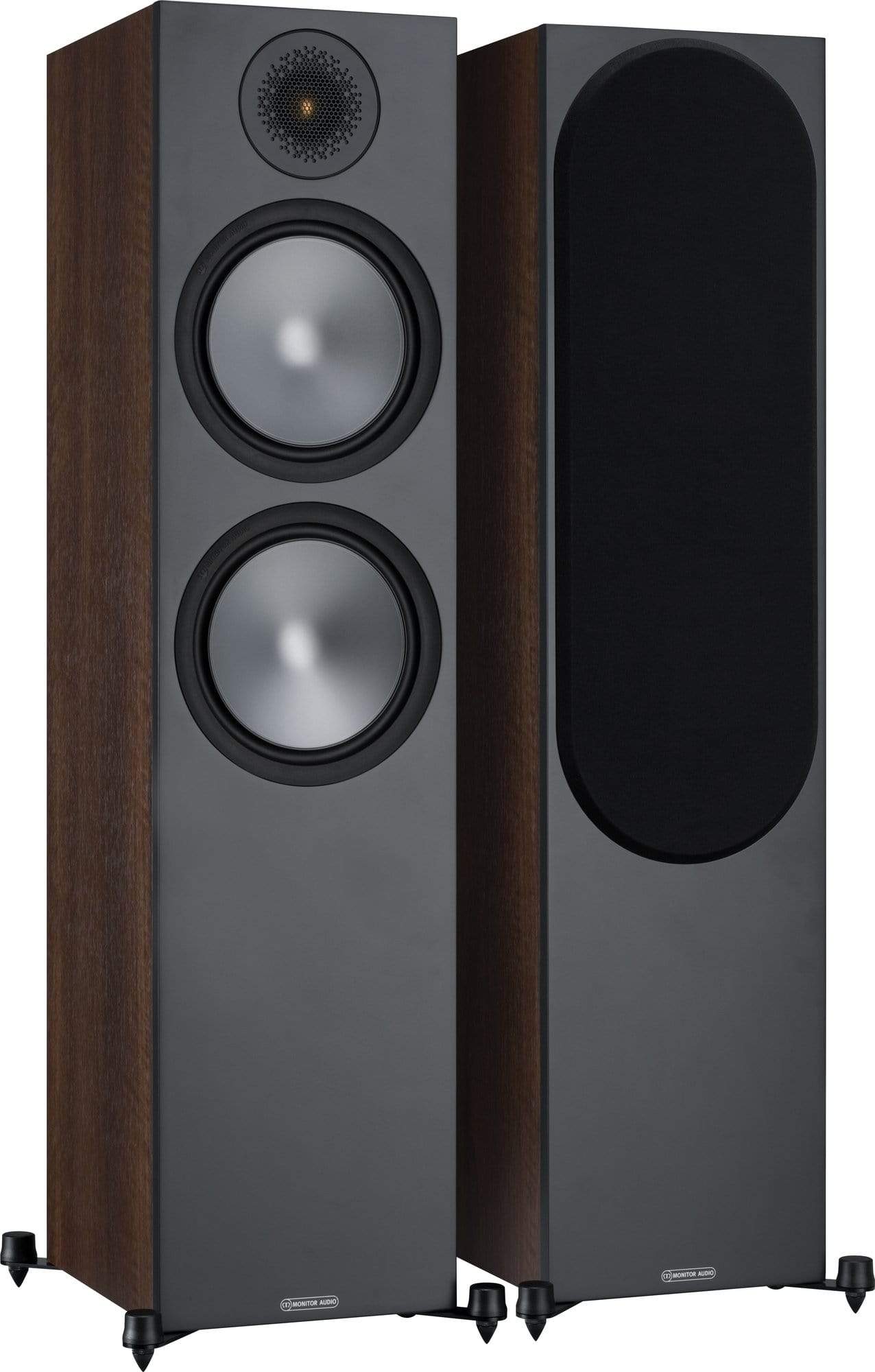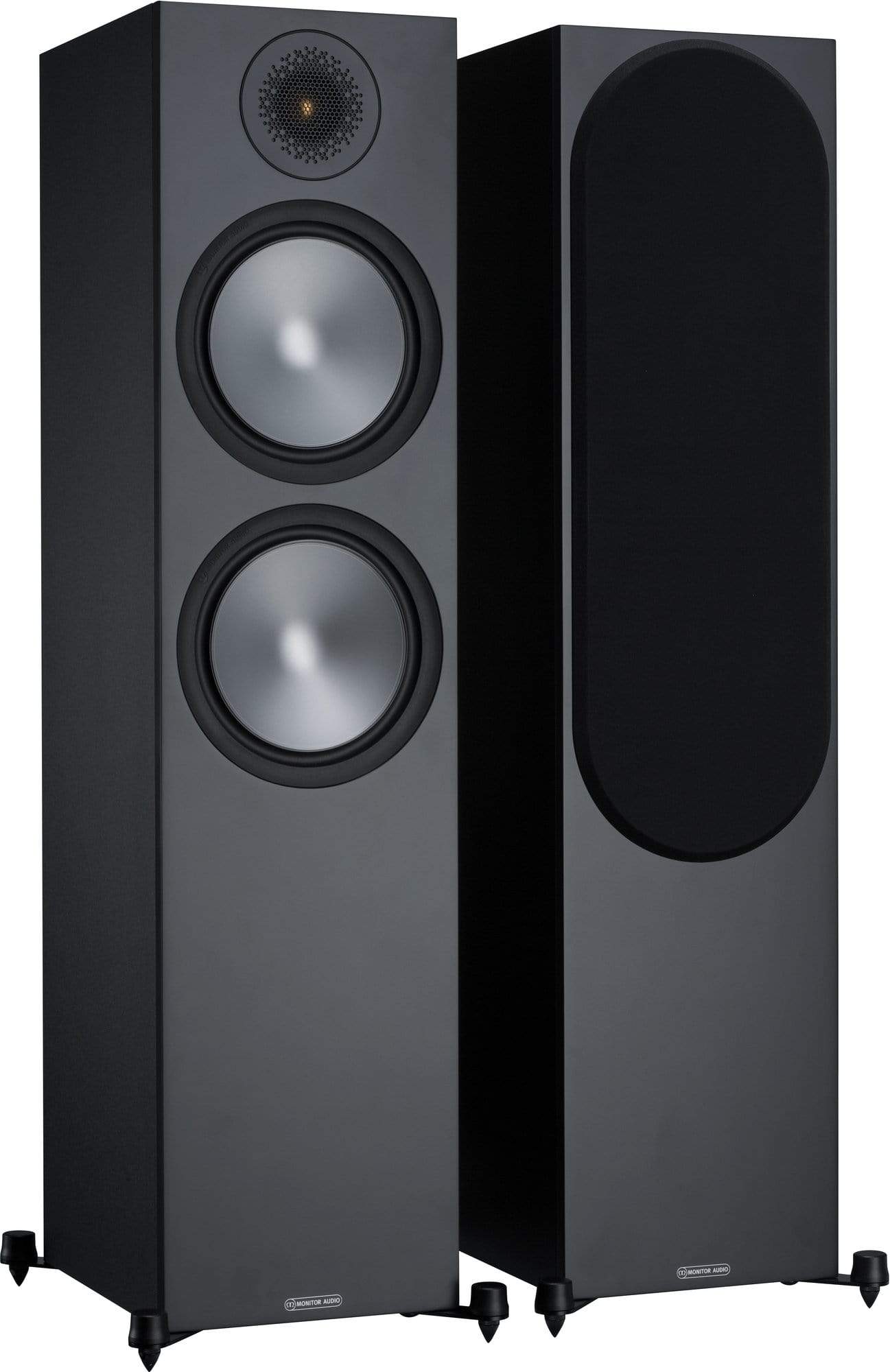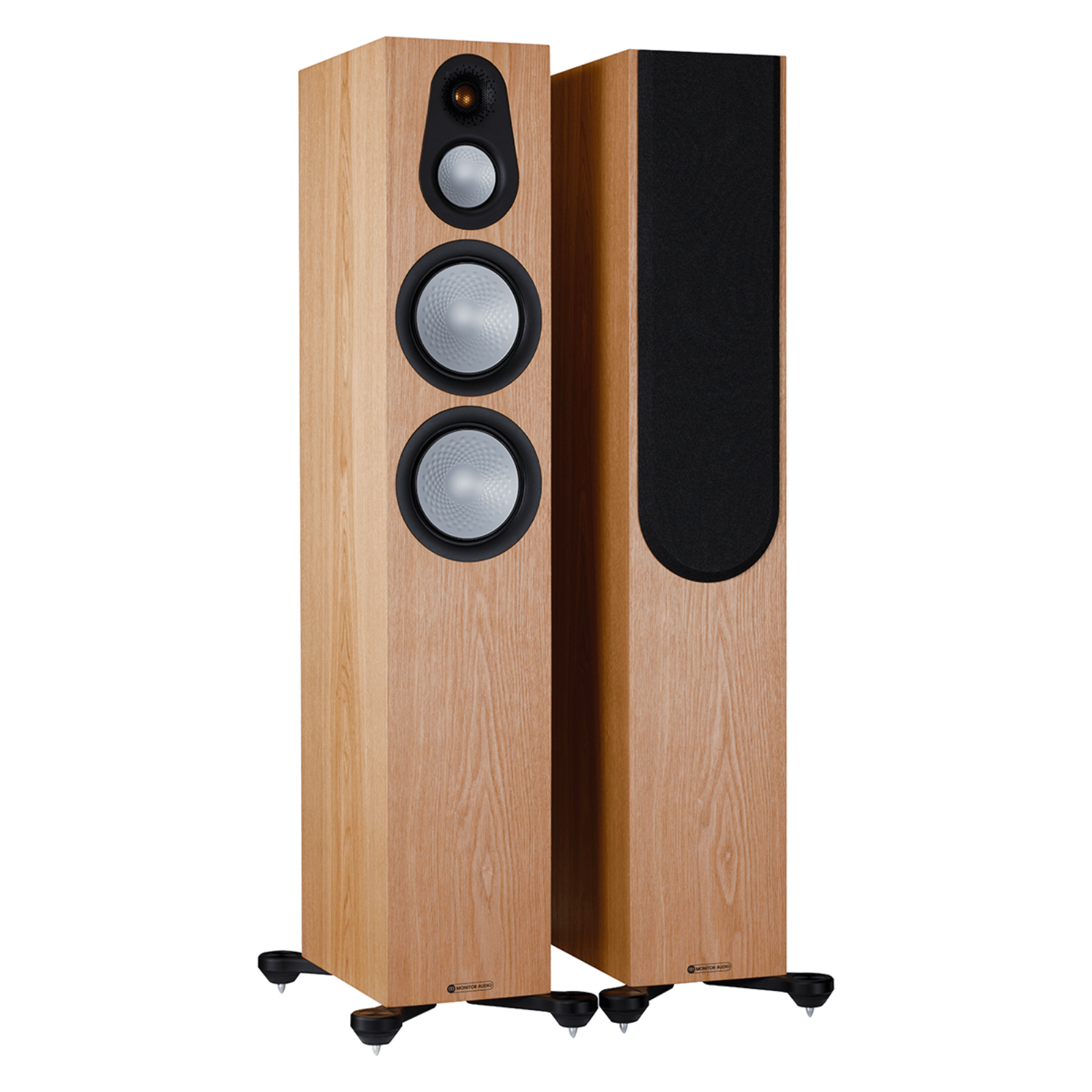NARROW YOUR SEARCH FOR
Home Theatre Speakers
Filters
289 products
TELL ME MORE ABOUT
Home Theatre Speakers
Home theatre speakers are essential components in creating an immersive audio experience for any home entertainment setup. They come in various types, each designed to... Read More
Home theatre speakers are essential components in creating an immersive audio experience for any home entertainment setup. They come in various types, each designed to cater to different spatial and acoustic requirements. Compact satellite speakers are ideal for smaller rooms, offering quality sound in a space-saving design, while floor-standing models provide a more powerful audio output, suitable for larger spaces.
The key to a great home theatre speaker system lies in its ability to deliver clear, detailed, and dynamic sound. This enhances the overall experience of watching movies, listening to music, or gaming. Compatibility with various home theatre systems is crucial, as it ensures seamless integration and ease of setup.
Whether the aim is to replicate a cinema-like environment or to enjoy music with high-fidelity sound, choosing the right home theatre speakers is vital. They should not only match the room's acoustics but also align with the user's personal preferences and aesthetic considerations. With advancements in audio technology, modern home theatre speakers also offer a blend of durability and visual appeal, making them a significant upgrade to any home entertainment system.
What Are Home Theatre Speakers?
Home theatre speakers are specialized audio devices designed to recreate the surround sound experience of a movie theatre in a home environment. These speakers vary in size, design, and function, but all work towards the common goal of delivering rich, immersive sound that enhances the viewing experience.
A typical home theatre speaker system includes a combination of different speaker types:
- Front Speakers: Positioned on either side of the TV or screen, these speakers handle the bulk of the sound and often carry the main audio elements of a movie or music track.
- Center Channel Speaker: Located near the TV, this speaker is crucial for clear dialogue delivery, ensuring that speech is distinct and centred in the soundstage.
- Surround Speakers: Placed around the listening area, these speakers create an immersive, multi-dimensional sound effect, adding depth and realism to the audio.
- Subwoofer: This speaker is dedicated to producing low-frequency sounds (bass). It adds depth to explosions, music, and other sound effects, enhancing the overall impact of the audio.
Home theatre speakers can be passive, requiring an external amplifier or receiver, or active (powered), with built-in amplification. The choice between these depends on the specific needs of the home theatre setup, including room size, desired sound quality, and compatibility with other components.
The technology behind these speakers has evolved significantly, with modern systems offering features like wireless connectivity, smart home integration, and support for advanced audio formats. This evolution allows for greater flexibility in setup and use, catering to a wide range of home entertainment needs.
How to Choose the Best Home Theatre Speaker System
Selecting the best home theatre speaker system involves considering several key factors to ensure an optimal audio experience tailored to your space and preferences.
Before purchasing a home theatre speaker pack, we'd always recommend chatting to our in-store experts as their many years of experience will always help you the best setup available for your budget.
Our experts will collaborate with you and help guide you in the following key areas:
-
Room Size and Acoustics: The size and acoustics of your room play a crucial role in speaker selection. Larger rooms may require more powerful speakers or additional surround sound units to fill the space with sound effectively. Conversely, smaller rooms might benefit from compact, less powerful speakers.
-
Speaker Types and Configuration: Home theatre systems typically range from 5.1 to 7.1 channels or more. A 5.1 system includes five speakers and a subwoofer, while a 7.1 system adds two additional surround speakers. Consider the layout of your room and where you can place these speakers for optimal sound.
-
Compatibility with Existing Equipment: Ensure the speakers are compatible with your existing home theatre receiver or amplifier. The power output and impedance levels should match to prevent damage and optimize performance.
-
Sound Quality: Listen to different speaker systems if possible. Pay attention to clarity, balance, and how the system handles both high and low frequencies. A good system should deliver clear dialogue, detailed highs, and deep, distortion-free bass.
-
Wired vs. Wireless: Decide whether you prefer traditional wired speakers or the convenience of wireless connectivity. Wireless speakers offer more flexibility in placement and reduce cable clutter but may require separate power sources.
-
Aesthetics and Design: Consider how the speakers will fit into your home décor. Speaker design varies widely, and finding a style that complements your room can be as important as the sound quality for many users.
-
Budget: Set a realistic budget. Higher-priced systems generally offer better sound quality and more features, but there are also many affordable options that provide excellent audio experiences.
-
Brand and Warranty: Consider purchasing from reputable brands known for quality and reliability. Also, check the warranty and customer support options available for the product.
By carefully evaluating these aspects, you can choose a home theatre speaker system that not only meets your audio expectations but also integrates seamlessly into your home environment.
Maintenance and Care for Home Theatre Speakers
Proper maintenance and care are crucial for ensuring the longevity and optimal performance of your home theatre speakers. Here are some key tips to help you maintain your speakers effectively:
-
Regular Cleaning: Dust and dirt can accumulate on speaker surfaces and in crevices, potentially affecting sound quality. Gently wipe the speakers with a soft, dry cloth. Avoid using harsh chemicals or water, which can damage the speaker components.
-
Proper Placement: Keep speakers away from extreme temperatures and humidity. Avoid placing them in direct sunlight or near heating and cooling vents. This prevents damage to the speaker materials and electronic components.
-
Avoid Overdriving: Consistently playing your speakers at excessively high volumes can lead to wear and tear or even blow out the drivers. Ensure that you use your speakers within their recommended power range.
-
Cable Management: Regularly check the cables and connections for any signs of wear or damage. Loose connections can cause static or interruptions in sound. Keep cables organized and away from high-traffic areas to prevent accidental damage.
-
Speaker Grills: If your speakers have removable grills, periodically remove them to clean any dust build-up. This is especially important for maintaining clear high-frequency sound.
-
Environmental Considerations: If you live in a particularly humid or dry climate, consider using a dehumidifier or humidifier in the room where your speakers are located to maintain a consistent level of humidity.
-
Firmware Updates: For speakers with digital components or wireless capabilities, keep the firmware updated. Manufacturers often release updates that can improve performance, add features, or fix bugs.
-
Professional Servicing: If you notice any issues with sound quality or performance, consider having your speakers professionally serviced. This is particularly important for high-end models where DIY repairs can be risky.
By following these maintenance and care tips, you can help ensure that your home theatre speakers continue to provide a high-quality audio experience for many years.
Final Thoughts
Home theatre speakers are a vital component of your entertainment setup, offering an immersive audio experience that enhances movies, music, and games. By understanding the different types of speakers available, how to choose the best system for your needs, and the importance of proper placement and calibration, you can significantly elevate your home audio experience.
Remember, the longevity and performance of your speakers heavily depend on regular maintenance and care. Treat them as an investment – with the right care, they will serve you well for many years, providing countless hours of high-quality audio enjoyment.
Whether you're a movie buff, a music enthusiast, or a gaming aficionado, the right home theatre speaker system can transform your audio experience, bringing your favourite content to life with clarity, depth, and power. So, take the time to select, set up, and maintain your speakers wisely, and you'll reap the rewards of a truly exceptional home audio environment.
Some Quick FAQ:
What are the key components of a home theatre system?
A home theatre system primarily comprises a display device (like a TV or projector), an AV receiver as the central hub, various speakers for surround sound, media sources (such as Blu-ray players or streaming devices), and quality cables for connections. Additionally, a universal remote for easy control and comfortable seating, along with room acoustic treatments, enhances the overall viewing and listening experience.
What is the role of a subwoofer in a home theatre system?
A subwoofer is responsible for reproducing low-frequency audio signals, creating deep and powerful bass that adds depth and impact to the overall sound quality of a home theatre system.
How does a soundbar enhance the audio experience in a home theatre setup?
A soundbar simplifies and enhances the audio experience by providing a wide range of sound from a single, sleek unit, often offering clearer dialogue and more detailed sound compared to standard TV speakers.
What role does a centre speaker play in a home theatre system?
The centre speaker in a home theatre system is crucial for clear dialogue delivery, anchoring the on-screen action's speech directly to the screen, which enhances the overall clarity and immersion.
What is the importance of surround speakers in a home theatre setup?
Surround speakers in a home theatre setup provide immersive, multi-directional audio that envelops the listener, creating a more realistic and engaging experience, especially in action scenes and dynamic soundtracks.
How do in-ceiling speakers contribute to a home theatre setup?
In-ceiling speakers contribute to a home theatre setup by delivering overhead sound effects, enhancing the sense of space and immersion, and are particularly effective in Dolby Atmos and DTS:X setups.
How do soundbars with Dolby Atmos technology enhance the home cinema experience?
Soundbars with Dolby Atmos technology enhance the home cinema experience by creating a three-dimensional sound field, offering height and depth to the audio which brings a more enveloping and realistic sound experience.
What are the advantages of integrating in-wall speakers into a home theatre setup?
Integrating in-wall speakers into a home theatre setup offers a clean, unobtrusive look while providing high-quality, directional sound that can be tailored to the room's acoustics, enhancing both aesthetics and audio performance.
NEED MORE GUIDANCE?
We are here to help
Check out some of our most commonly asked questions.
What do I need to play records?
Getting into vinyl? That’s awesome! We have some curated turntable Hi-Fi packs, with everything you'll need to get spinning right away. But if you want to build your own, read on for all the details.
First off, you'll need a turntable. It's the star of the show, so make sure it’s in good nick, with a decent cartridge and stylus (needle).
Next, there’s the phono preamp. Some turntables or amplifiers come with one built-in, but if yours doesn’t, you’ll need one as a bridge between your turntable and amplifier or powered speakers.
For the sound output, you’ve got two options. You can go with a traditional setup involving an integrated amplifier to take the signal from your phono preamp and power your passive speakers. Alternatively, you can opt for powered speakers, which have the amplifier built in – a handy all-in-one solution.
Speaking of speakers, good ones are a must for that rich, warm vinyl sound we all love. Whether you go for bookshelf or floorstanding speakers (or powered ones) depends on your space and budget.
And there you go! With these essentials, you’ll be ready to dive into your vinyl collection and enjoy that classic sound.
What can a wireless speaker do?
Wireless speakers are a game-changer for how you enjoy music and audio around the house. First off, they let you stream music wirelessly from your phone, tablet, or computer, so no more messing about with cables. You can easily play tunes from Spotify, Apple Music, Tidal or whatever streaming service you fancy.
If you’re into having music everywhere, many wireless speakers offer multi-room audio. You can sync them up to play the same music in every room or control what plays in each room individually, perfect for parties or just keeping the vibes consistent throughout your home.
Voice control is another brilliant feature. Many come with built-in assistants like Alexa, Google Assistant, or Siri. You can control your music with just your voice, ask for the weather, set reminders, or even control other smart home devices.
Sound quality? These little gadgets often pack a punch, delivering high-quality audio that can rival traditional wired setups. Some even offer 360-degree sound, filling the room with music from every angle.
In a nutshell, wireless speakers bring flexibility, convenience, and top-notch sound to your audio experience, making them a fantastic addition to any home. Whether you’re hosting a party, working from home, or just chilling out, they make listening to music a breeze.
How do you choose the right speaker & amplifier combination?
Deciding on a good speaker and amplifier combination is like putting together a perfect wine and cheese pairing—it’s all about balance and harmony. Here’s a conversational guide to help you through it:
First, consider your speakers. These are your main players, so you want to choose ones that fit your space and listening preferences. If you love deep bass and have a bit of room, floorstanding speakers might be your go-to. For smaller spaces or a more subtle look, bookshelf speakers are fantastic.
Now, onto the amplifier. This is where things get interesting. Your amp needs to match your speakers in terms of power and impedance. Check the wattage ratings on your speakers—your amplifier should provide enough power to drive them properly. Too little power and you’ll be missing out on sound quality; too much, and you risk damaging your speakers.
Next, think about the impedance (measured in ohms). Your amp and speakers should be compatible here too. Most speakers are rated at 8 ohms, but some can be 4 or 6. Make sure your amplifier can handle the impedance of your speakers to avoid any performance issues.
Another important factor is the type of sound you’re after. Some amps are known for their warm, rich tones, while others might be more neutral or even slightly bright. It’s a bit like choosing between a vinyl record and a digital stream or CD —each has its own charm. If possible, listen to different amp and speaker combinations to see what sounds best to your ears.
If purchasing online, note that at LE, we have made recommendations on speaker & amplifier combinations that we think sound wonderful together within each product listing.
Don’t forget about connectivity and features. Modern amplifiers often come with a host of options like Bluetooth, Wi-Fi streaming, and various inputs for all your devices. Make sure your amp has the inputs you need for your turntable, CD player, or streaming device.
Finally, consider your budget. Great sound doesn’t always mean breaking the bank, but be prepared to invest to get a quality setup that will last.
In the end, trust your ears. Listen to a few combinations if you can, and go with what makes your music sound the best to you.
Why do I need a headphone amplifier?
If you’re diving into the world of high-quality audio, a headphone amplifier can be a real game-changer. Think of it like this: most standard devices, like your smartphone or laptop, just don’t have the oomph needed to drive headphones properly. They might get the job done, but they won’t do your music justice. A headphone amp gives your headphones the power they need, ensuring you get the volume and clarity that really makes your music shine.
It’s not just about making things louder, either. A good headphone amp can significantly improve sound quality. You’ll get clearer highs, richer mids, and tighter bass, making your favourite tracks sound even better. You might notice details you’ve never heard before, especially if you’re listening to high-resolution audio files.
Premium headphones often have higher impedance, meaning they require more power than your typical audio source can provide. A headphone amp can handle this with ease, making sure your headphones perform at their absolute best. Plus, many amps come with extra features like bass boost, equalisation, and gain control, giving you more ways to tweak the sound to your liking.
In short, if you’re passionate about your music and want to hear it in the best possible way, a headphone amplifier is definitely worth considering. It’s all about unlocking the full potential of your gear and really getting the most out of your listening experience.
Where should I start when designing a home cinema?
Designing your own home cinema? That's awesome! We are here to help walk you through the process, but as a starting point, here’s what we would recommend and where to kick things off:
First up, pick your spot. For most people this is your existing lounge room, but if you have an underused garage, or spare bedroom, then you have an opportunity to create your very own true Home Cinema experience. Find a room that’s just right—not too cramped and ideally away from noisy areas. This sets the stage for that immersive movie experience.
Next, think about how you’ll set things up. Plan where your seats will go and where to place your projector screen for the best view from every angle. It’s all about creating that comfy, cinematic vibe.
Sound matters, too. Consider if you want a wireless system for simplicity or a full surround sound speaker system with AV receiver for that surround-sound thrill. Think about soundproofing or adding acoustic panels or thick carpets to really amp up the audio quality of the room.
Now, onto the screen. Decide between a crisp TV or a projector setup, depending on your room size and personal style. Maybe even throw in some dimmable lights or smart lighting to set the mood just right.
And hey, don’t forget comfort. Invest in plush cinema seating and think about the décor—whether it’s movie posters, blackout curtains, or popcorn machine & bar area, whatever gives you that true cinema feel.
Lastly, tech it up! Make sure everything—from your Blu-Ray player & Apple TV to your gaming consoles—is set to sync perfectly with your new setup.
With these steps, you’re on your way to creating a home cinema that’s not just a space, but an experience. Enjoy movie nights like never before!


